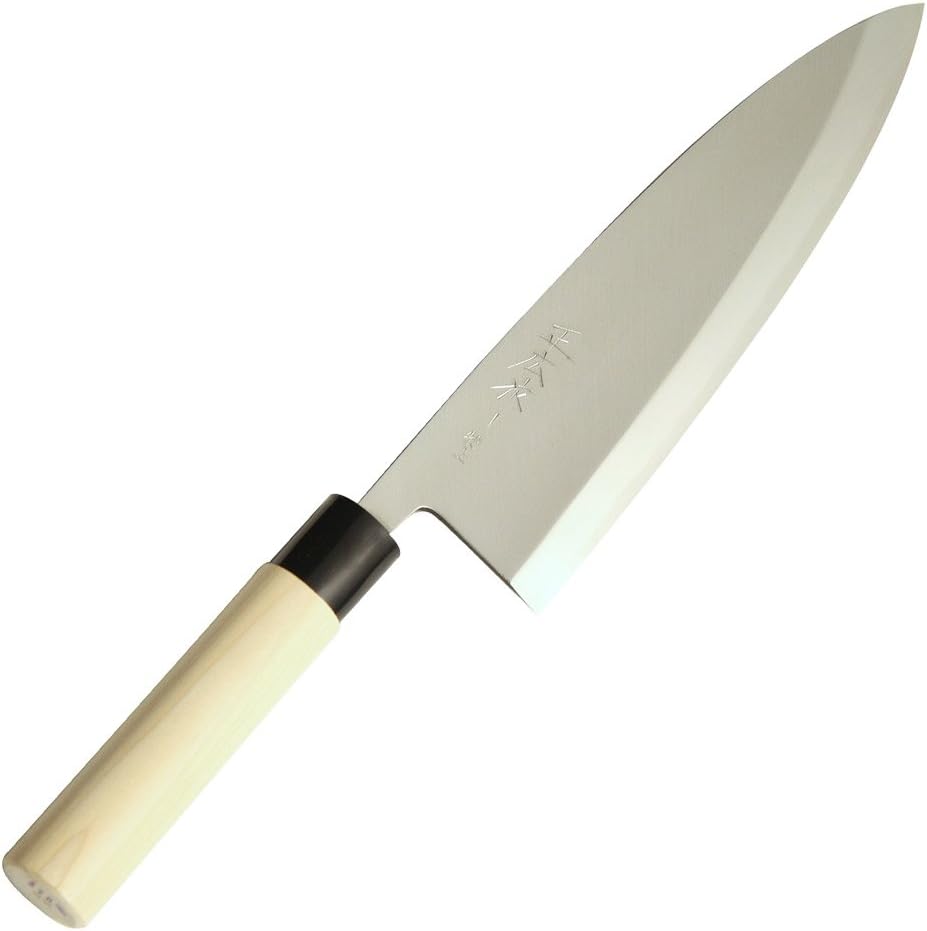The Deba knife is a traditional Japanese knife specifically designed for butchering and filleting fish, although it can also be used for poultry and meat. Known for its robustness and precision, the Deba knife is an essential tool in Japanese kitchens.
Due to its specialized design and the techniques required for proper use, the deba knife is not typically recommended for complete beginners. Professional chefs often prefer carbon steel deba knives for their superior cutting performance and ease of re-sharpening, despite the higher maintenance requirements.
Blade
Blade Shape: The Deba knife has a thick, heavy blade with a pointed tip. The blade’s thickness provides the strength needed to cut through bones and joints, while the pointed tip allows for precise cutting and filleting.
Length: The blade length typically ranges from 150mm to 210mm, with longer blades used for larger fish and shorter blades for smaller fish and detailed work.
Edge: The Deba features a single bevel edge (kataba), sharpened only on one side. This design allows for an incredibly sharp edge that can make clean, precise cuts.
Material: Deba knives are often made from high-carbon steel, known for its excellent sharpness and edge retention, though it requires careful maintenance to prevent rust.
Used For
Fish Butchery: The primary use of the Deba knife is for butchering and filleting fish. The thick blade can handle cutting through fish bones and heads, while the sharp edge is perfect for precise filleting.
Poultry and Meat: While primarily a fish knife, the Deba can also be used for poultry and meat. It is well-suited for breaking down chickens and other small animals, cutting through bones and joints with ease.
Versatility: Beyond butchery, the Deba can also be used for slicing and chopping vegetables, though care must be taken due to its heavy blade.

